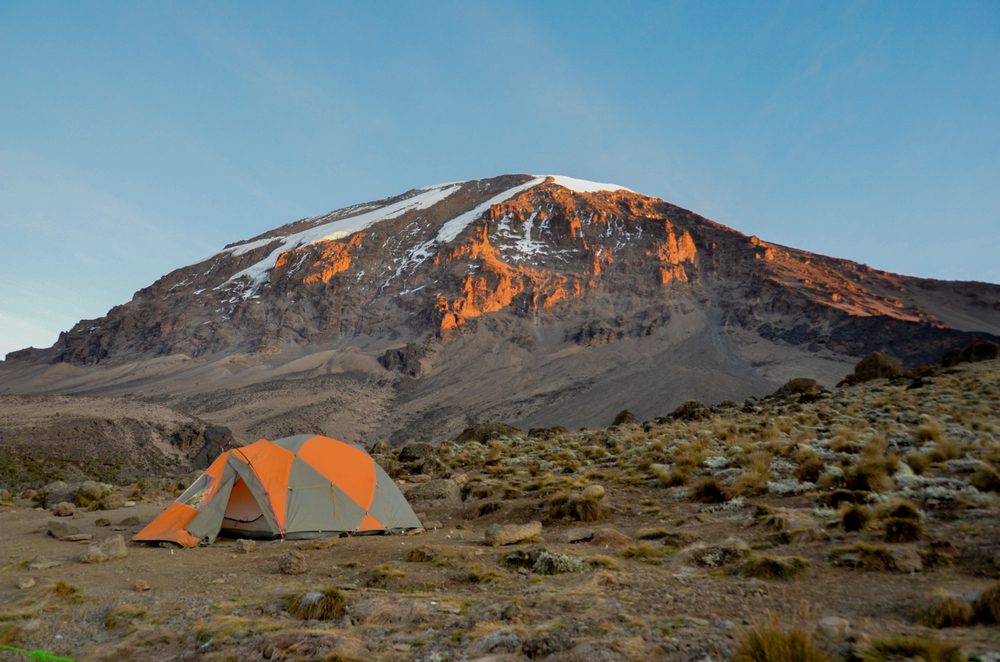
Kilimanjaro Trekking Tanzania – Ultimate Guide to Conquering Africa’s
Introduction to Kilimanjaro Trekking
Mount Kilimanjaro, the tallest freestanding mountain in the world, stands at an impressive 5,895 metres (19,341 feet) above sea level. Located in Tanzania, this majestic peak is a dream destination for trekkers and adventure seekers worldwide. Unlike many other high-altitude mountains, Kilimanjaro requires no technical climbing skills, making it accessible to both experienced hikers and beginners. However, its demanding terrain and high altitude require careful preparation and acclimatisation.
Best Time to Climb Kilimanjaro
The best months for trekking Kilimanjaro are January to March and June to October. These periods offer stable weather conditions, with minimal rainfall and clearer skies, increasing the chances of a successful summit.
- January to March: Fewer crowds, colder temperatures, occasional snowfall at higher altitudes.
- June to October: Dry season, most popular time, warmer temperatures, stunning views.
Avoid April, May, and November, as these months experience heavy rains, making trails slippery and challenging.
Kilimanjaro Climbing Routes
There are six main trekking routes to the summit, each offering different levels of difficulty, scenery, and acclimatisation opportunities.
1. Marangu Route – The “Coca-Cola” Route
- Duration: 5-6 days
- Difficulty: Moderate
- Accommodation: Huts
- Pros: Shortest route, comfortable sleeping huts.
- Cons: Lower success rate due to poor acclimatisation, crowded.
2. Machame Route – The “Whiskey” Route
- Duration: 6-7 days
- Difficulty: Challenging
- Accommodation: Tents
- Pros: High success rate, scenic beauty, great acclimatisation.
- Cons: Steeper trails, physically demanding.
3. Lemosho Route – The Most Scenic Route
- Duration: 7-8 days
- Difficulty: Moderate to difficult
- Accommodation: Tents
- Pros: Best acclimatisation, stunning views, fewer crowds.
- Cons: Longer duration, slightly expensive.
4. Rongai Route – The Remote Route
- Duration: 6-7 days
- Difficulty: Moderate
- Accommodation: Tents
- Pros: Less crowded, great for beginners.
- Cons: Less scenic, limited acclimatisation opportunities.
5. Northern Circuit Route – The Longest & Most Successful Route
- Duration: 8-9 days
- Difficulty: Moderate
- Accommodation: Tents
- Pros: Highest success rate, stunning landscapes, excellent acclimatisation.
- Cons: Longest route, more expensive.
6. Umbwe Route – The Most Challenging Route
- Duration: 5-6 days
- Difficulty: Very Difficult
- Accommodation: Tents
- Pros: Direct and fast ascent.
- Cons: Steep and strenuous, low success rate.
Kilimanjaro Trekking Difficulty & Acclimatisation
Trekking Kilimanjaro is a physical and mental challenge. The biggest obstacle climbers face is altitude sickness, caused by rapid ascent. Proper acclimatisation is essential to reaching the summit safely. The best strategies include:
- Choosing a longer route (7+ days)
- Following the “climb high, sleep low” principle
- Drinking plenty of water (3-4 litres daily)
- Taking slow, steady steps (Pole Pole)
- Considering altitude medication like Diamox (under medical supervision)
Packing List for Kilimanjaro Trekking
A well-planned packing list ensures a comfortable and successful climb. Essential items include:
Clothing
- Base layers (moisture-wicking thermal wear)
- Insulating layers (fleece, down jacket)
- Waterproof jacket & trousers
- Hiking boots (well-broken-in, waterproof)
- Gloves, hats, gaiters
- Sunglasses & sunscreen
Gear & Equipment
- Daypack (30-40L)
- Sleeping bag (-10°C to -20°C rated)
- Trekking poles
- Headlamp & extra batteries
- CamelBak or water bottles (3-4L capacity)
Other Essentials
- First aid kit
- Snacks (energy bars, nuts, dried fruits)
- Personal hygiene items (wet wipes, toilet paper, hand sanitizer)
- Medications (altitude sickness tablets, pain relievers, anti-nausea meds)
Kilimanjaro Trekking Cost & Permits
The cost of trekking Kilimanjaro varies based on the route, number of days, and operator services. On average, expect to pay $2,000 to $5,000 per person, covering:
- Park fees & permits ($900 – $1,000)
- Professional guides & porters
- Accommodation & meals
- Trekking gear (if rented)
- Transportation to and from the mountain
Choosing a reliable trekking operator is crucial for safety and success. Avoid cheap, unlicensed tours, as they may compromise on safety, porter welfare, and overall experience.
What to Expect on Summit Day
Summit night is the most challenging part of the trek. Starting at midnight, climbers ascend in the dark, reaching Uhuru Peak by sunrise. Expect freezing temperatures (-20°C to -30°C), strong winds, and exhaustion. The key to success:
- Mentally prepare for long hours of hiking (6-8 hours up, 5-7 hours down)
- Layer up for warmth
- Keep hydrated & snack frequently
- Follow the guide’s pace (slow but steady)
Reaching Uhuru Peak is a moment of triumph, offering breathtaking views and an unparalleled sense of accomplishment.
Conclusion – Why Trek Kilimanjaro?
Trekking Mount Kilimanjaro is a once-in-a-lifetime adventure. From its diverse ecosystems to the thrill of reaching Africa’s highest peak, this journey is as rewarding as it is challenging. With proper preparation, a good trekking team, and determination, you can successfully conquer this legendary mountain.
If you are ready for an unforgettable adventure, start planning your Kilimanjaro trek today!
Primary Keywords (High-Volume & Competitive)
Route-Specific Keywords
Kilimanjaro Trekking Cost & Booking
Best Time to Climb Kilimanjaro
Kilimanjaro Packing List & Gear
Altitude Sickness & Acclimatisation
Kilimanjaro Trekking Experience
Photography & Views from Kilimanjaro
Food & Accommodation on Kilimanjaro
Kilimanjaro Cultural & Local Experiences
Post-Trek Recovery & Extensions
Adventure & Challenge Keywords
Miscellaneous Kilimanjaro Keywords
Long-Tail Keywords (More Targeted Search Queries)
-
What is the easiest Kilimanjaro route

0 comments